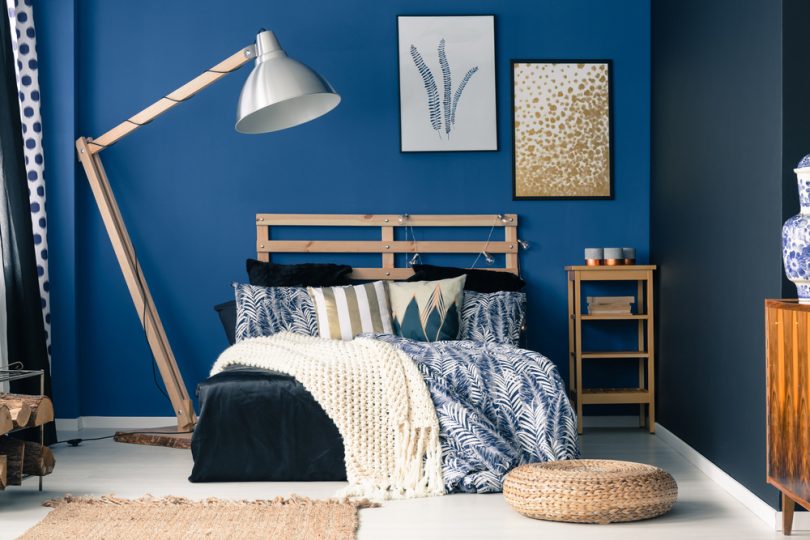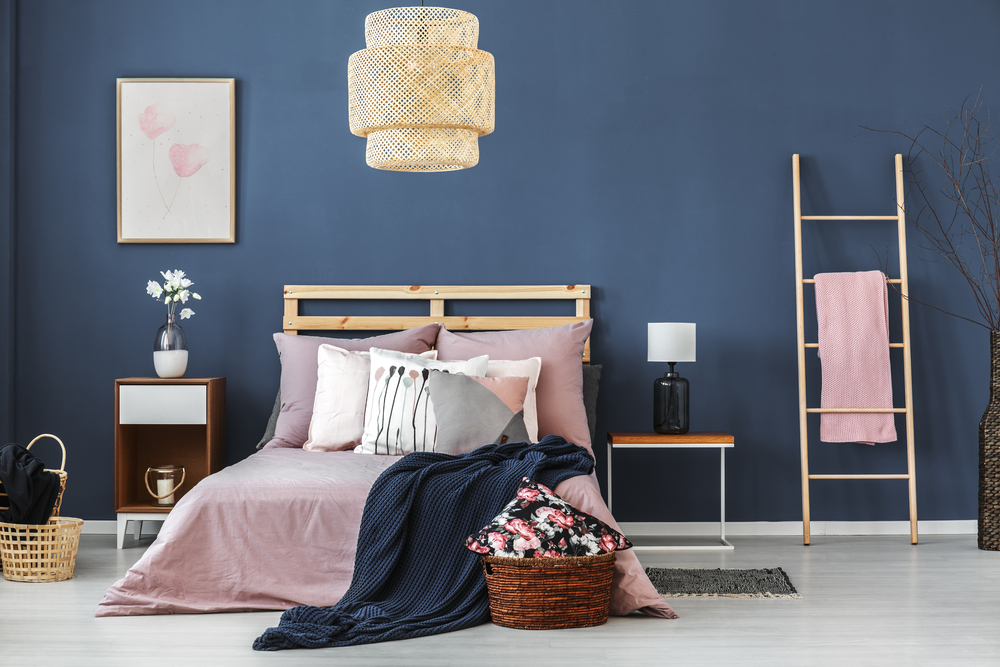Buying your first home can be exciting in a bunch of ways; you get to design each room exactly how you want it, furnish it how you want it, decorate the outside how you want it, and do your best to create your dream home. While each room’s design is important, there’s one room of your house in which the design you choose matters most. Your bedroom is the only room in your house (unless you only have one bathroom) that you are guaranteed to spend almost every night (only exception being those nights you’re travelling). In addition to that, it’s also the room where the activity intended for it (sleeping) is the most important. There’s quite a few things you should consider when choosing the decor and furniture for your bedroom to ensure you get the most restful sleep and have the most relaxing space. We’ll walk you through all of it in the article that follows.
Picking Your Color Scheme
First things first, you have to decide on the one thing that will tie all your decor together: your color scheme. You may think this is an easy decision, just pick whatever color you like, but that’s simply not the case. Whether you realized it before or not, color schemes can have a large impact on your mood and sleep. For example, according to a study done by Travelodge, those that paint their room a shade of blue tend to experience the ideal amount of sleep a night; blue has been proven to reduce heart rate and blood pressure and encourage calmness, helping you to experience the optimal mood for sleep. Below is a basic list of a few colors and how they can affect your mood and sleep.
Red: Red is an exciting color typically used in living rooms and dining rooms, rooms meant for entertaining. It’s usually seen as too stimulating a color for bedrooms, as it can cause elevated heart rate, respiration, and blood pressure and increase excitement, keeping you awake and night and increasing your agitation.
Orange: Orange has also been found to help encourage sleep, though not as well as blue or yellow. However, this has been debated as some sources disagree, thinking orange is mainly ideal for fitness rooms. Orange is known to add both cheer and excitement, appropriately since it is the combination of red and yellow.
Yellow: Yellow, like blue, was found to be very encouraging for sleep. However, it’s recommended that you use yellow as a sub color, rather than a main color (like gray with yellow accents), because studies have shown those residing in rooms that are predominantly yellow are more likely to lose their tempers. Yellow, especially pale yellow, accents in a bedroom can brighten it up the room in the daytime with a soft, happy shade.
Green: Green, closely linked to blue, is highly recommended for bedroom and has been proven to help improve sleep. It’s known as one of the most restful colors for your eyes. The most persuasive argument for putting green in the bedroom is the fact that using green as a main color has proven to have a calming effect and can relieve stress while helping you unwind, perfect for promoting a good and restful night’s sleep.
Purple: While one source shows that purple can be less helpful for sleep, the other states that certain lighter shades like lavender can have a similar effect on your sleep as blue. Purple is a rich color that comes in a variety of shades; it stands to reason that the shades that are more red in nature would be more harmful to sleep than those that are bluer.
Choosing the Right Bed and Mattress
While there is other furniture you can place in your bedroom (nightstands, dressers, vanities, etc.), the choice of which furniture you get is mostly up to you and dependent on the size of your room. For the purposes of devoting this article to the most important information, we’re only going to cover the most important piece of furniture that the decision of which can have the greatest impact on you: your bed and mattress. The following list is a basic guide to help you through the purchase of your new bed and mattress.
Budget: The first thing you need to plan out is your budget. If you’re tight on your budget, it’s more important for you to cut corners on the bed frame than the mattress. The mattress can affect your sleep, which affects your daily mood and your muscle health, as sleeping on a bad mattress can cause prolonged back and leg pain. There’s a great selection of affordable beds from bedsos.co.uk that might keep you from having to stretch your budget so thin.
Size: Before you purchase a bed, you should make sure it will fit in the space you have available. If you have a smaller bedroom, it’s probably not a great idea to try to squeeze a king size bed into it. Measure your space and decide accordingly. This is also true for your bed frame. Some bed frames are rather large and cause the bed to sit out from the wall a ways, effectively making the bed larger and take up more space.
Try before you buy: The most important thing to do when purchasing a new bed is to try it out before you purchase it. Lay on the mattress and make sure it’s comfortable for you. Toss and turn a little on it, maybe bounce a bit; make sure that it’s going to be comfortable enough for you to sleep on and good for your back and muscles.
The two most important things for you to consider when decorating your new bedroom in your first home are the color scheme and the bed you choose. While the other decisions matter, they won’t affect you overall in the way these two things will. If you choose too bright or active of a color, you can hurt your sleep. Likewise, if your mattress isn’t good for you, you can experience prolonged back and muscle pain. We hope this guide has helped you in making decisions for the decoration of your new bedroom.








